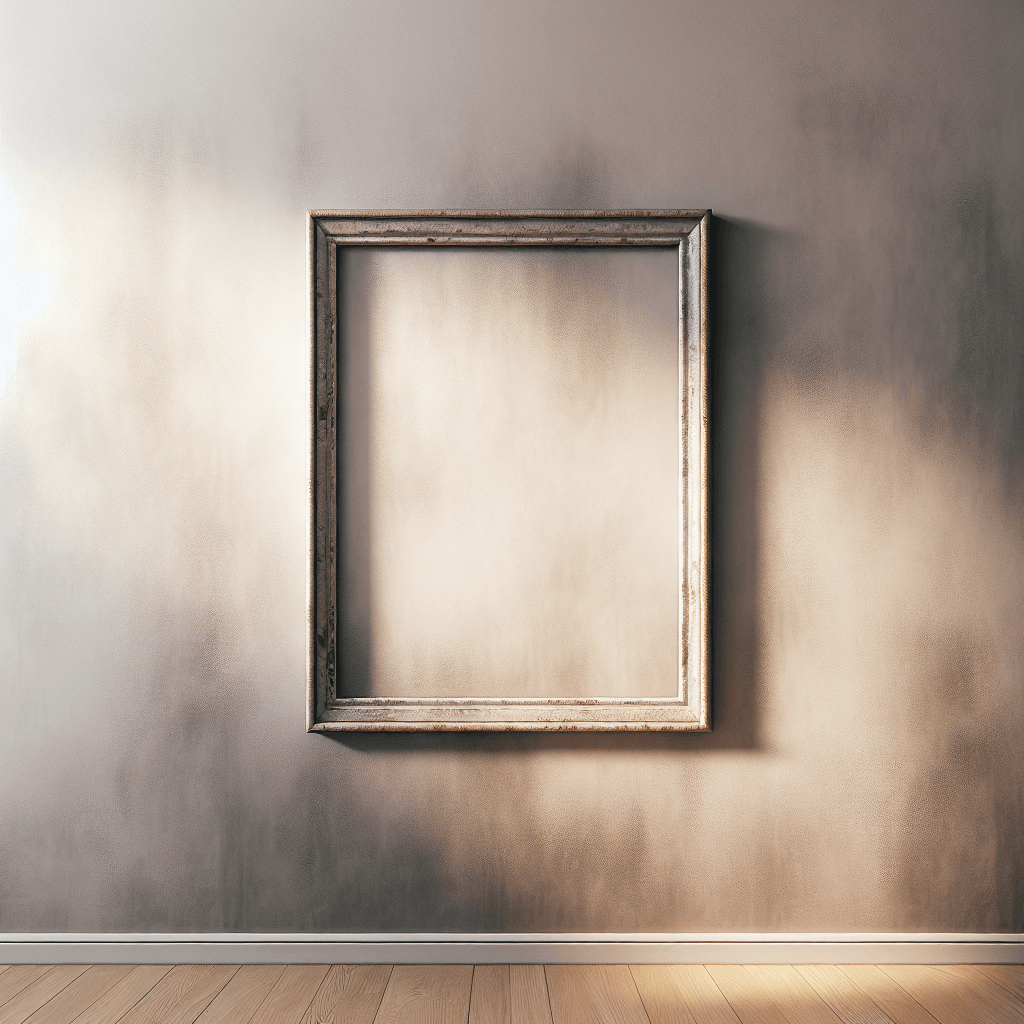Why can the faint outline of a picture frame remain on a wall after it is gone
You've taken down the picture, but its ghost remains on the wall. Discover the fascinating science of light, dust, and time that creates this common household haunting.


Too Long; Didn't Read
TLDR: The wall around the frame has slowly faded from sunlight or collected dust and grime over time. The area covered by the frame was protected, so the outline you see is the original, cleaner wall color.
Blog Post Title: The Ghost in the Room: Why Can the Faint Outline of a Picture Frame Remain on a Wall After It Is Gone?
Have you ever decided to redecorate, taking down a long-hanging piece of art, only to be met with its ghostly silhouette on the wall? This faint, perfectly rectangular outline is a common and frustrating sight for homeowners and renters alike. It’s not a sign of poor housekeeping or a paranormal event, but rather a fascinating intersection of chemistry, physics, and your home's environment. This post will demystify this "wall shadow" effect by exploring the scientific reasons why a faint outline of a picture frame can remain on a wall, long after the picture itself is gone.
The Primary Culprits: Light and Air
The two main reasons for that stubborn wall outline are surprisingly simple: the light that fills your room and the air you breathe. The area of the wall protected by the picture frame ages differently than the exposed wall around it.
The Power of Fading: Ultraviolet (UV) Light
The most common cause of picture frame outlines is photodegradation, or fading caused by light. Nearly all light sources, but especially natural sunlight streaming through a window, contain ultraviolet (UV) radiation. Over months and years, these high-energy UV rays break down the chemical bonds in the pigments that give your paint its color.
The result is a slow, subtle fading of the paint across the entire exposed wall surface. The portion of the wall covered by the picture frame, however, is completely shielded from this UV assault. It acts as a perfect sunblock. When you finally remove the frame, you are not seeing a stain; you are seeing the paint's original, unfaded color in stark contrast to the lightened wall around it. This effect is more pronounced in rooms that receive a lot of direct sunlight and on walls painted with darker or less UV-resistant colors.
The Slow Accumulation: Airborne Contaminants
If the outline on your wall appears darker or dingier than the area that was covered, the culprit is likely the air itself. The air in any home contains millions of microscopic particles, including:
- Dust and dirt
- Soot from candles, fireplaces, or cooking
- Oils from cooking vapors
- Nicotine and tar from tobacco smoke
Over time, these airborne contaminants settle on surfaces, creating an almost invisible layer of grime. The picture frame protects the wall behind it from this slow-motion buildup. When the frame comes down, you are left with a cleaner, brighter patch that highlights just how much grime has accumulated on the surrounding wall. This is often more noticeable in kitchens, in homes where candles are burned frequently, or in the homes of smokers.
Other Contributing Factors
While light and grime are the primary offenders, a few other factors can play a role in creating or accentuating these wall shadows.
Thermal Tracking (Ghosting): Sometimes, the outline is caused by a temperature differential. The wall behind a picture is slightly more insulated than the surrounding wall. Dust and soot particles are often drawn to colder surfaces through a process called thermophoresis. This can cause a very faint, dark line to appear precisely where the cooler wall meets the warmer, insulated spot, tracing the frame's edge.
Paint Type and Finish: The quality and finish of your paint also matter. Lower-quality paints often use pigments that are more susceptible to UV fading. Furthermore, paints with a matte or flat finish have a more porous texture, which can trap dust and grime more easily than a slick, non-porous semi-gloss or satin finish that is easier to wipe clean.
Conclusion
That persistent rectangle on your wall is not a mystery, but a historical record of your décor. It’s a testament to the slow, steady impact of the environment inside our homes. Whether through the color-fading power of UV light or the gradual buildup of airborne particles, the wall behind a picture frame is essentially preserved in a time capsule. Understanding these causes helps explain why these outlines appear and can inform decisions on how to clean them or when a fresh coat of paint is the best solution. So, the next time you see that ghostly frame, you'll know you're not looking at a haunting, but at a simple and fascinating scientific process unfolding on your wall.


